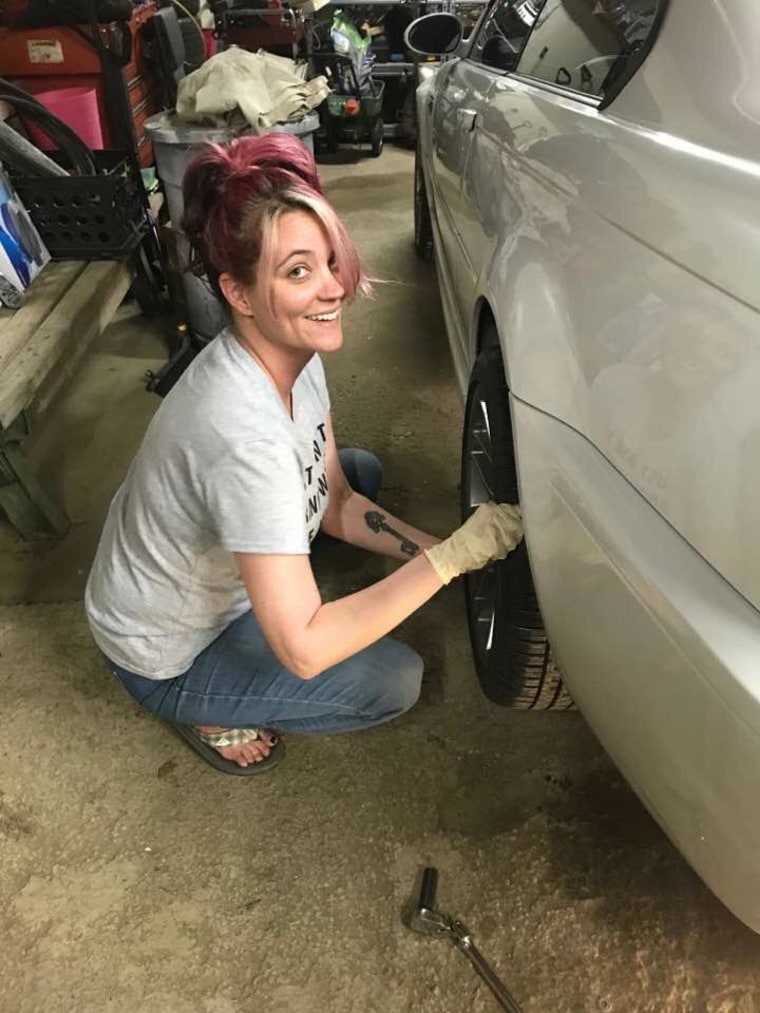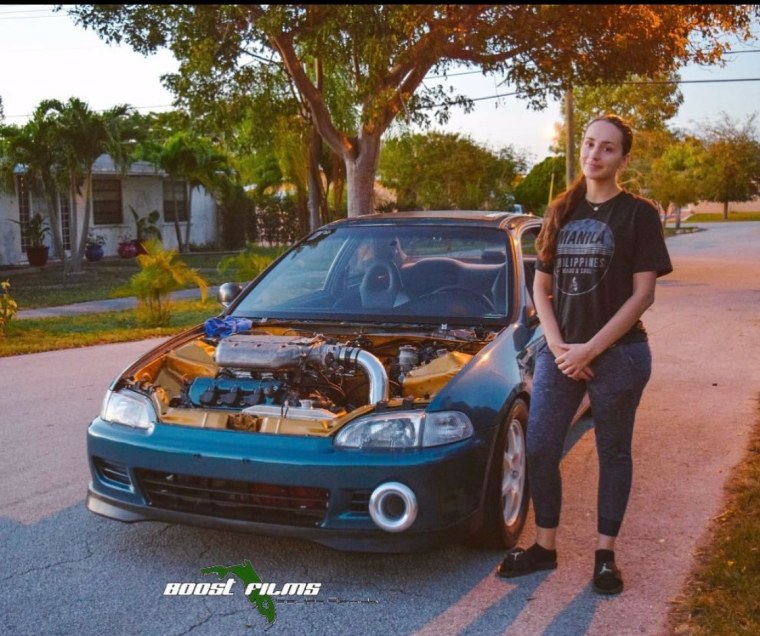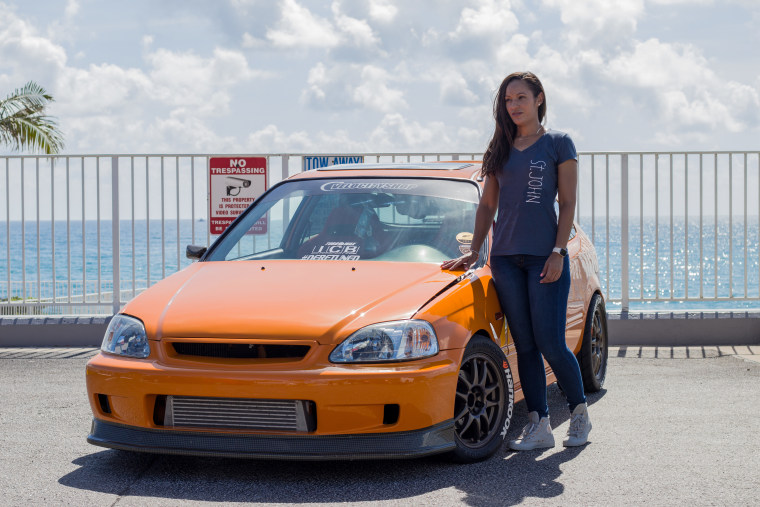Elizabeth Myers-Suarez has had a need for speed since she was old enough to drive.
It wasn’t long before the teenager was racing on the street, challenging other drivers — mostly young men — to a duel.
When she became a mom ten years ago and subsequently discovered her daughter had autism, she put her fast cars and street racing on the back burner. Last year, she heard about a new program called Street Racing Made Safe, and she was intrigued.

Myers-Suarez found her way to the track in Maryland, near her home in Virginia, and believed it would be a great way for her family to bond, while giving her kids a chance to see their parents following their passion.
“I love taking my kids to the track,” said Myers-Suarez, who drives a 2005 BMW M3 over 100 mph on the track. “I can show them that I’ll take care of them, and I can show them what I can do. And that I can even beat their dad on the track.”
Myers-Suarez says the safest place for racing is on the track, and she’s modeling for her kids an appropriate way to do what she does.“I 100 percent support their desire to drive well, but I want them to keep it on the track,” she says. “Whatever we do, we do it with all the safety I can possibly find. I’m a mom first and foremost, after all.”
SRMS was created in 2011 by Mario L Ojito, Jr after losing his father to a motorcycle accident and nearly losing his best friend in a similar crash. He made it his mission to find a way for auto enthusiasts to stop illegal street races and relocate to a safer — and legal — place.
The demographic breakdown at the track is 92 percent men and 8 percent women, Ojito told TODAY Parents.
Never miss a parenting story with the TODAY Parenting newsletter! Sign up here.
“We’re starting to see more and more racers who are women,” Ojito said. “It’s a sexist industry, but the only real separator is the gender. Women are just as knowledgeable as men in the craft.”
Myers-Suarez agrees. “I understand the sport is male-dominated, but I don’t really care. When people said things to me that weren’t nice, that gave me the drive to go faster.”
One of the women who frequents the track in Palm Beach, Florida, on a regular basis is Shirley Dolan, mother of five boys ranging in age from 18 months to 14 years. All five of them join her at the track to cheer her on. Dolan has modified her 1995 Honda Civic with a 2001 Acura CL type S motor and 2003 TL type transmission, and achieves speeds up to 150 mph on the track during a race.

“I let the kids help on the car and they learn,” said Dolan. “My 8-year-old son just had a birthday and he said he wants a certain car. I laughed and told him he’s not quite ready for that.”
Aisha Christian, another regular racer in the Palm Beach area, grew up on the island of St. John, in the U.S. Virgin Islands, where street racing was prevalent. Now, she is well-known at her local track with a winning record.
Christian has a 10-year-old son, and she’s teaching him everything she knows about building a race-ready car.

“My son knows the difference between going to the track and being safe or racing on the street,” said Christian, who taught herself to modify her own 1997 Honda Civic hatchback with a simple operating manual.
“I would never do things on the street with him in my car to put him at risk.”
Christian has become acutely more aware of racing's dangers since her son was born.“There are big risks, especially when your car is creating a lot of horsepower," she says. "Any dips, curves, or potholes can pose a threat to you running off the road. I’ve seen people racing on the street; some people push the limit and unfortunately, a lot of the time it ends up really bad. ... I would rather be safe and go to the track, where there are ambulances and people who can help."
Street Racing Made Safe simulates all forms of illegal street racing, and participants are also given the ability to challenge a competitor, just as in illegal street racing. Safety guidelines vary according to the top speeds of the cars; everyone is required to wear a helmet and have their car reviewed by SRMS staff.
Eight-time NHRA (National Hot Rod Association) champion Tony Schumacher, father of three, knows exactly how high the stakes can be in a car moving at high speed. At his races, there is a helicopter waiting at the finish line in case anyone needs to be airlifted out, plus racers wear fire suits and helmets designed to protect the head and neck. Street racing leaves the safety factors to chance, and the odds are against the drivers as well as any bystanders in the path if a crash takes place.
Schumacher teaches his kids how to drive responsibly and safely, and encourages them to learn about what a car can do and foster a love of all things with an engine. He’s also a champion of safe driving for teenagers, and advocates for Doug Herbert’s Be Responsible And Keep Everyone Safe (BRAKES) program.
“It’s way better to be on the track than the street,” Schumacher told TODAY Parents. “Giving kids an outlet that’s not on the street — where it’s illegal, by the way — and putting them in a safer place is amazing.”
Myers-Suarez would love to see her daughter follow in her footsteps.
“For 10 years, my life has been about autism and my kids,” Myers-Suarez said. “Street Racing Made Safe gave me the chance to be ME again. It’s a great outlet for me — when you have a special-needs kid, you have therapy appointments, you’re on boards. Now it’s like: Mommy’s the PTO president … and here’s her new helmet.”